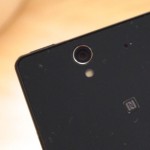The Sony Xperia Z [Review]
Performance
Thanks to that Snapdragon S4 Pro processor and the 2GB of RAM, the Xperia Z is a pretty great performer. Just about everything I did with it was incredibly smooth, from playing games to, browsing the web, and watching HD video. I did notice a bit of stutter inside the camera app, however.
While you’ll certainly be happy with performance, you’re unlikely to be wowed by it.
The Xperia Z was noticeably faster than my Nexus 4 when doing processor intensive things like playing games, and in many cases it felt more responsive than my Galaxy S III, too. Having said that, for everyday tasks — like making and receiving calls, browsing the web, and listening to music — the devices I just mentioned are just as smooth as the Xperia Z.
While you’ll certainly be happy with performance, then, you’re unlikely to be wowed by it, because it’s not dramatically different to what’s already available. That’s not necessarily a bad thing, but it could be if you’re comparing the Xperia Z to other 2013 smartphones like the Galaxy S4 and the HTC One.
Cameras
Sony has been making a big fuss about the Xperia Z’s 13-megapixel Exmor RS camera, and when I first got my hands on the device at Mobile World Congress back in February, this was the feature the Sony representative was really keen for me to try. But after using it for two weeks, I wasn’t overly impressed with it.
It’s certainly not a bad camera, and for the large majority of smartphone users, it’ll produce satisfactory shots when you need them. But you’ll still get better photos from the iPhone 5’s 8-megapixel camera, and that’s largely due to the software rather than the hardware.
Sony’s software provided unpredictable results; on some occasions images were soft and a little washed out, on other occassions they were sharp and overly saturated, and every so often they were just right. Almost always the images looked better on the display before you hit the shutter button.
Sony does offer some features that’ll let you tweak your images and get better results, however, and those of you who like to add filters and effects are catered for, too. You’ll also find several different camera modes, including “Superior auto,” burst, and panorama.
The front-facing camera is a 2.2-megapixel affair, which you’ll probably only use for video calls and taking selfies to post on Instagram. For these things, it works just great.
Next Page: Microphone, Connectivity, Battery



